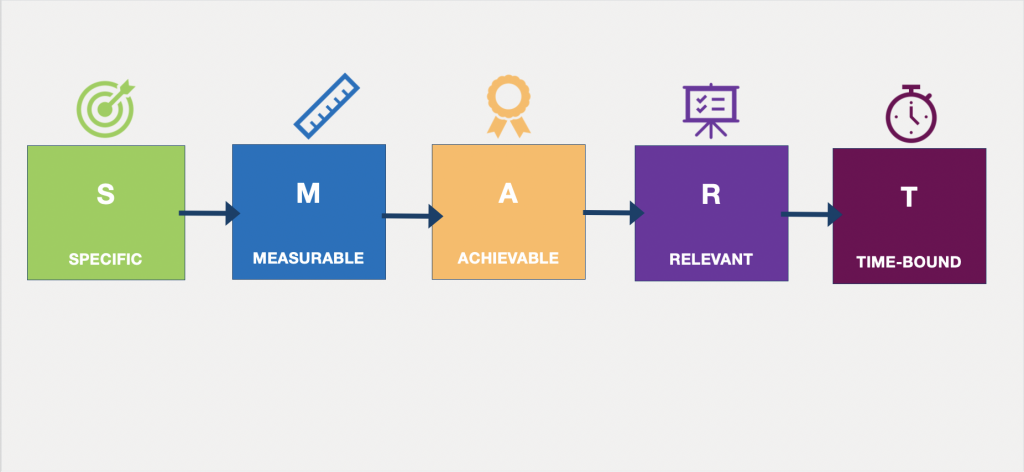
Let’s Get S.M.A.R.T. … Steps to Create Program Objectives
By Hope Gilbert
‘Leadership is working with Goals and vision; management is working with Objectives.’
-Russel Honoré
What exactly are Goals – does every program need them?
A program’s goals should be very short statements that clearly define what the organization wants to achieve. These general statements define what the organization/program seeks to accomplish. Without specific goal statements, it is easy for a program to lose direction and get off course. Think of a goal statement as the foundation or groundwork required for success.
Objectives, how are they different from Goals?
Objectives are the targeted tasks, deliverables and activities identified by programs to meet previously outlined program goal(s). Simply put, objectives should include the detailed steps needed to achieve success as defined by your goal statements.
There are five primary differences between goals and objectives:
Alignment and Order: Goals accomplish the mission; objectives accomplish the goals.
Scope: Goals are broad and oftentimes not measurable; objectives are narrow and almost always quantifiable.
Specificity: Goals are general statements of achievement; objectives include time-bound actions/activities.
Tangibility: Goals are generally abstract; objectives are always concrete.
Timeframe: Goals are long-term achievements; objectives have clearly defined timelines.
How do I make my Objectives S.M.A.R.T.?
Originally developed by George Doran in 1981, the S.M.A.R.T. method ensures objectives are Specific, Measurable, Achievable, Relevant and Time-Bound. While you can use the S.M.A.R.T. method to create your goal statements, it isn’t always appropriate to do so; however, the S.M.A.R.T. method should always be followed when determining your program’s objectives.
Evaluators can easily create S.M.A.R.T. objectives by simply reviewing a few quick questions. Remember, it is important for each objective to include all five elements defining it as specific, measurable, achievable, relevant and time-bound. Including each S.M.A.R.T. element in every objective doesn’t mean your objective statements need to be long or wordy…just the opposite! Your objectives need to be clear and concise, while simultaneously addressing each of the five S.M.A.R.T. elements individually.
Let’s explore some guiding questions to ensure your program’s objective statements are S.M.A.R.T.:
SPECIFIC:
- Who will execute or deliver my program and how?
- Who is my program’s target population?
- What are my program’s outputs/products?
- What are the intended benefits or outcomes of my program?
MEASURABLE:
- How much change (positive or negative) should I expect from my program?
- What kind of data will I use to identify my program’s changes?
- How will my program’s data be collected (from whom/what)?
ACHIEVABLE:
- Exactly how will my program’s objective by accomplished?
- Does my program have the necessary inputs required to accomplish the objective?
- Is this objective too great, too small or just right?
- Can this objective be accomplished regardless of known external factors?
RELEVANT:
- Will my program be helped by this objective to meet its mission and goals?
- What specific need of my program does this objective address?
- Does this objective have support from my program’s staff, participants and other stakeholders (advisory boards, funding agency etc)?
- Does the objective align with my program’s broader organizational priorities?
TIME-BOUND:
- Exactly when will this objective be achieved?
- If this objective required stages for implementation, what is the time frame for each stage?
- Is the expected time frame for accomplishing the objective too short, too long or realistic?
- What internal and/or external deadlines should be considered to successfully achieve this objective on time?
So, I have the tools, how about some examples?
Let’s take a look at a few examples of S.M.A.R.T. objectives…and some that didn’t quite follow the rules. Can you spot the differences?
With practice, anyone can develop S.M.A.R.T. objectives. Just remember, keep your statements clear and concise. Review the questions above to ensure each of your objective statements include all five S.M.A.R.T. elements.





